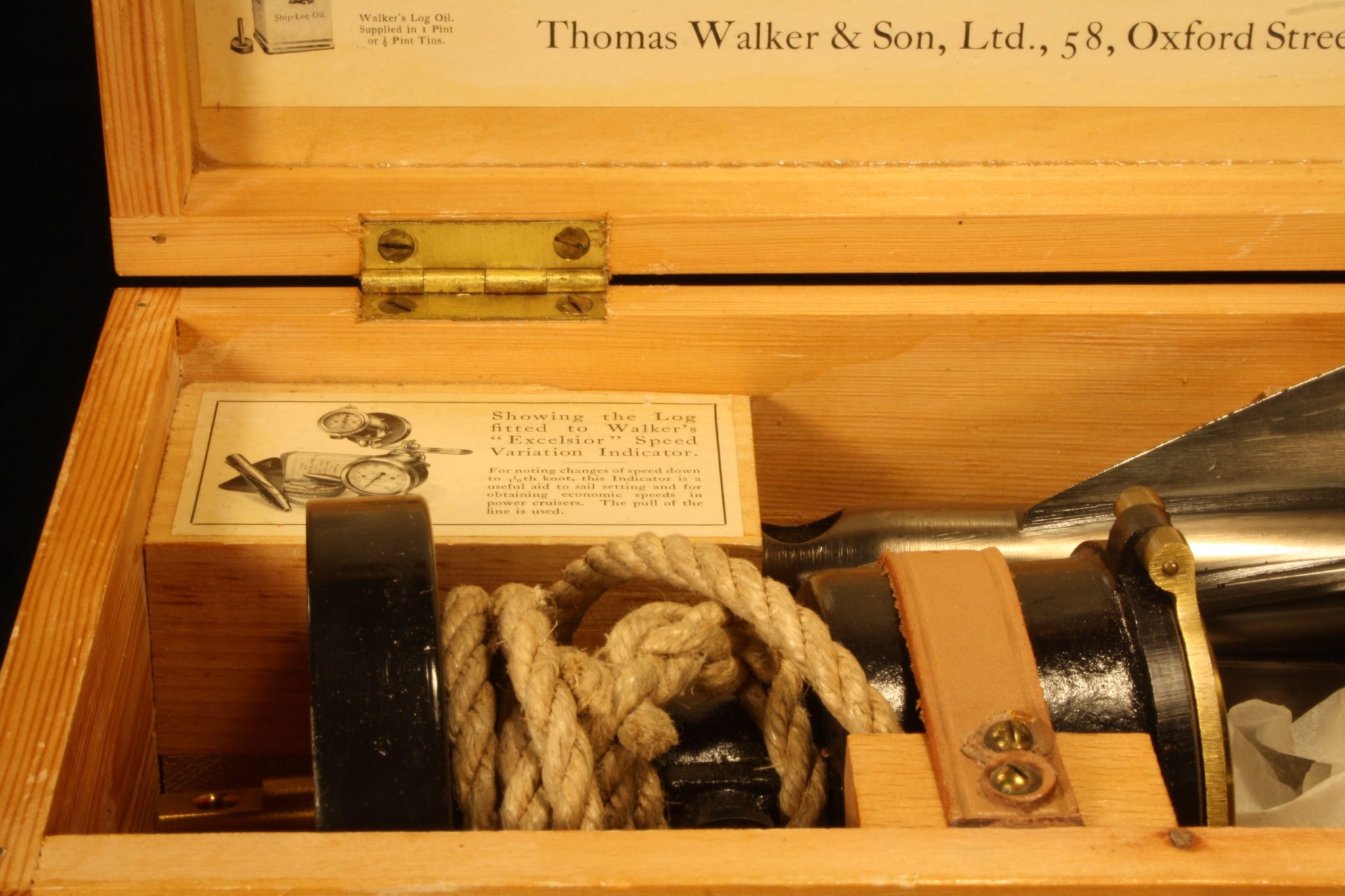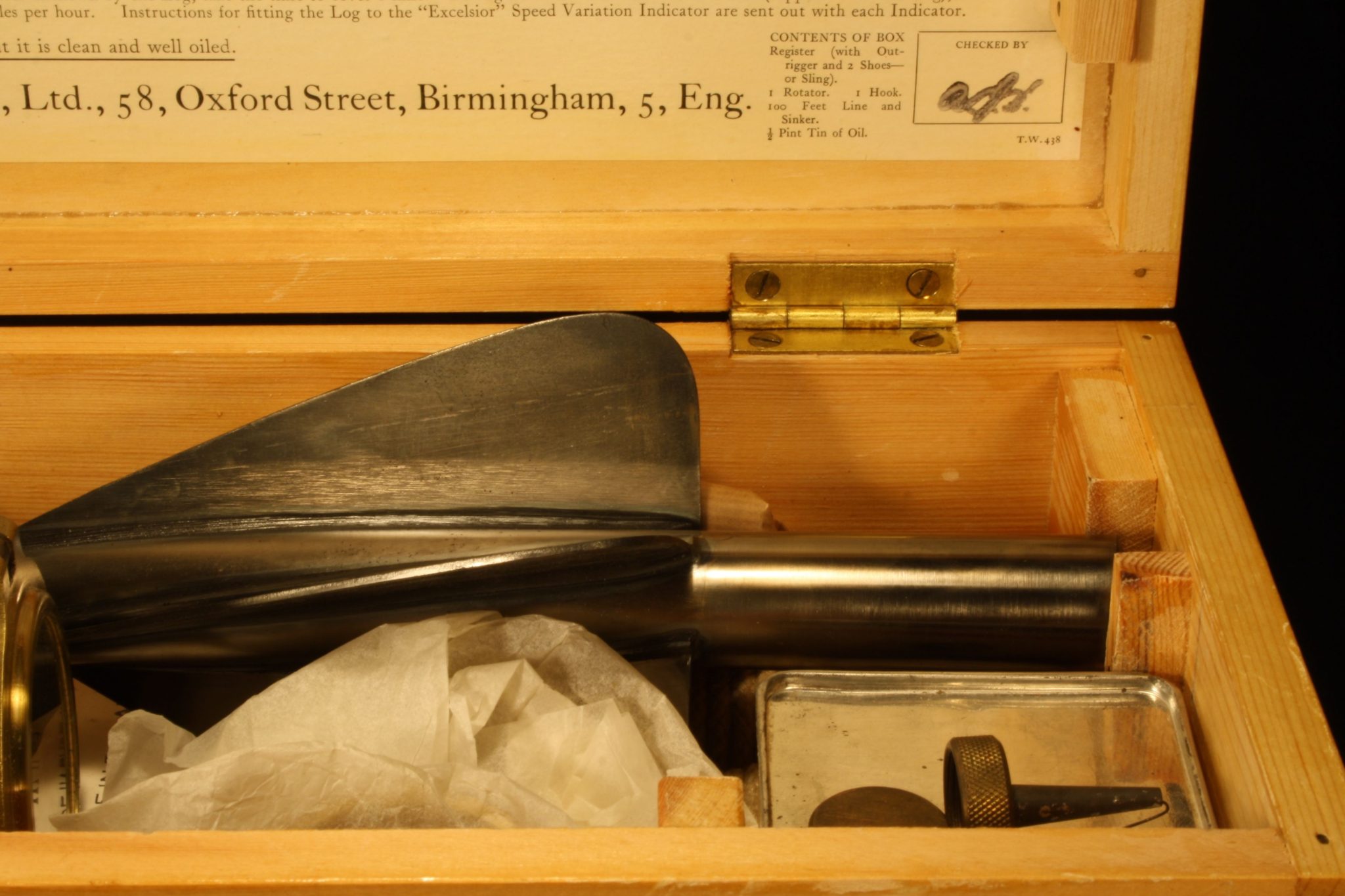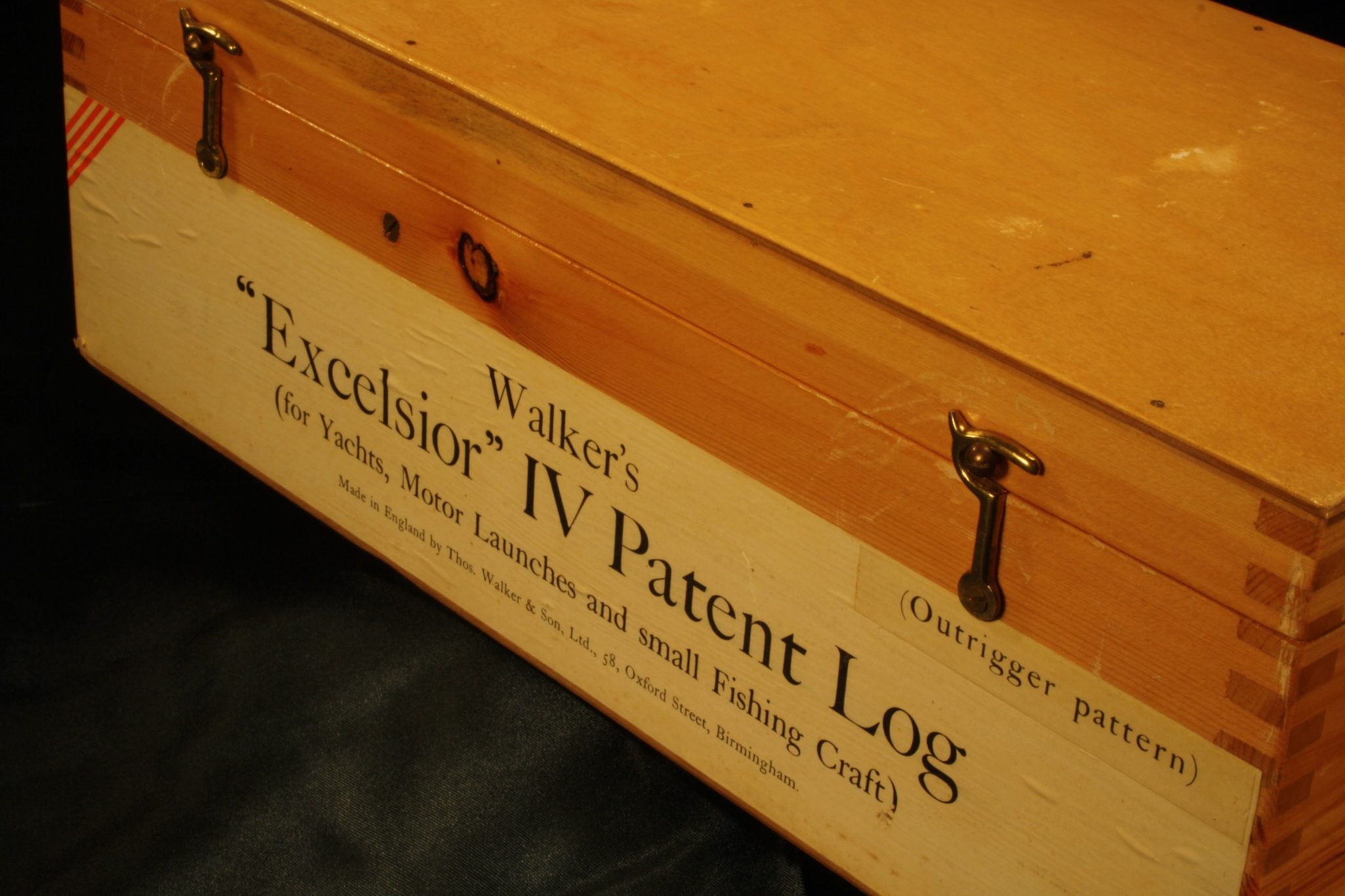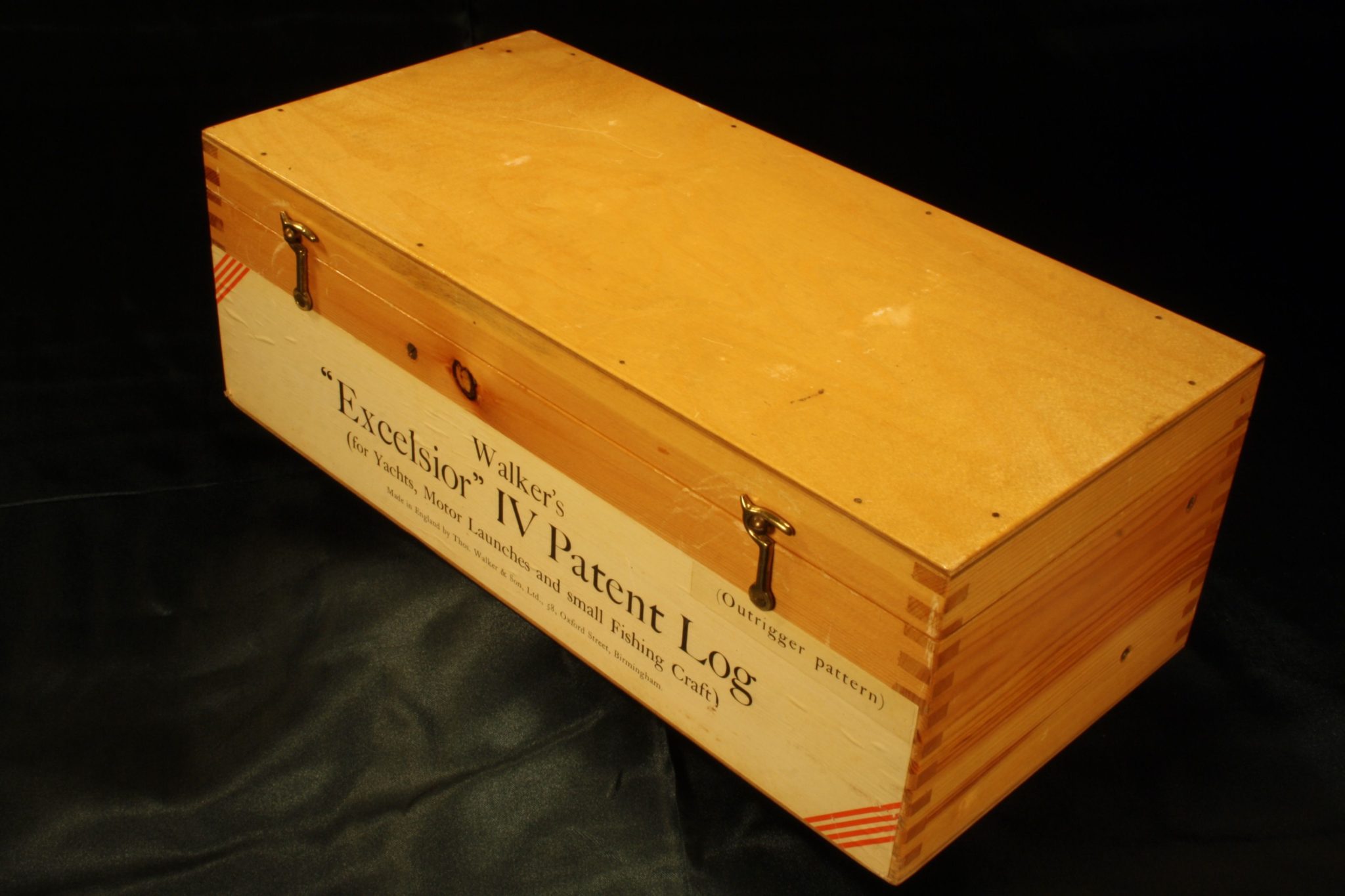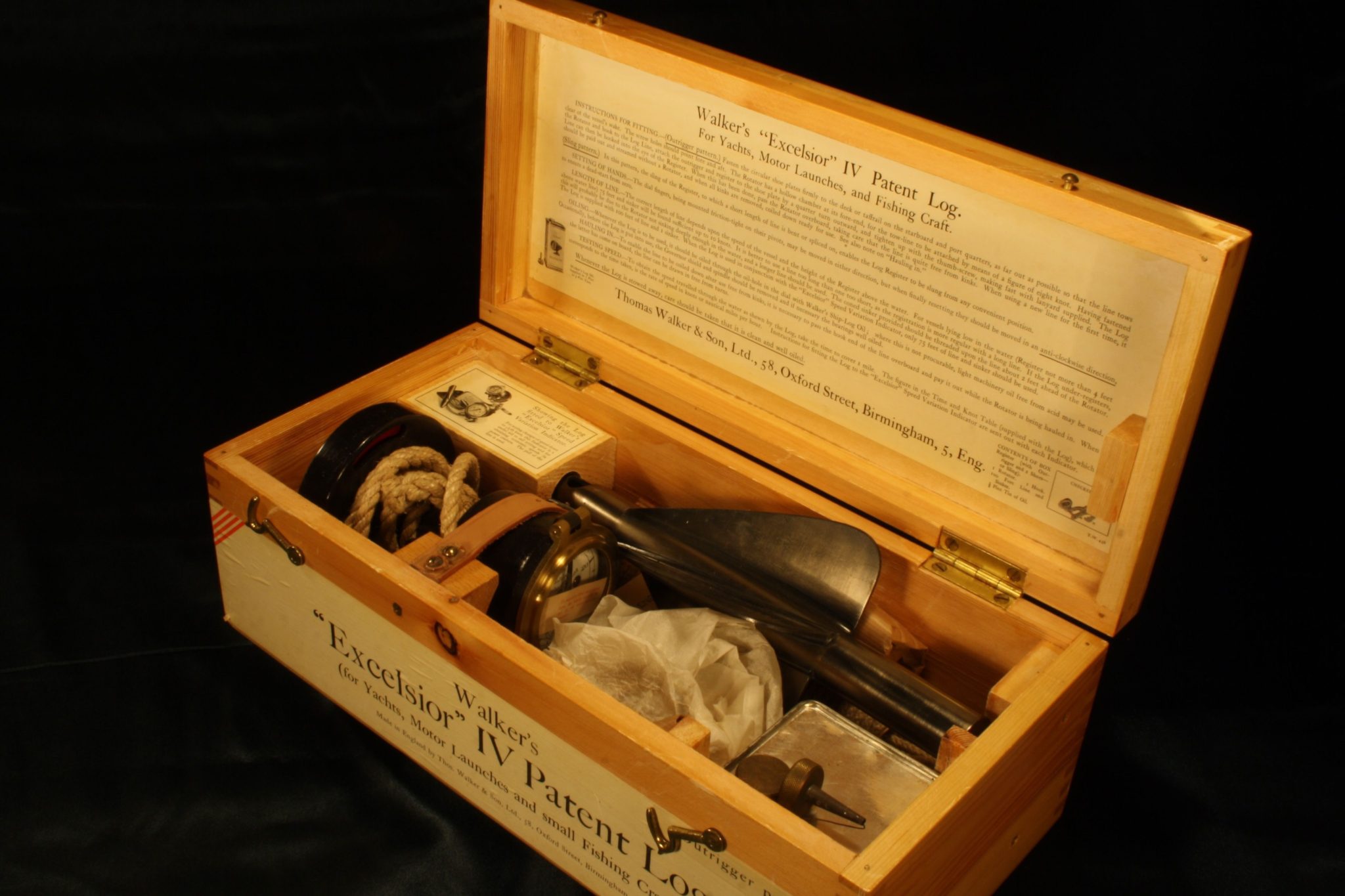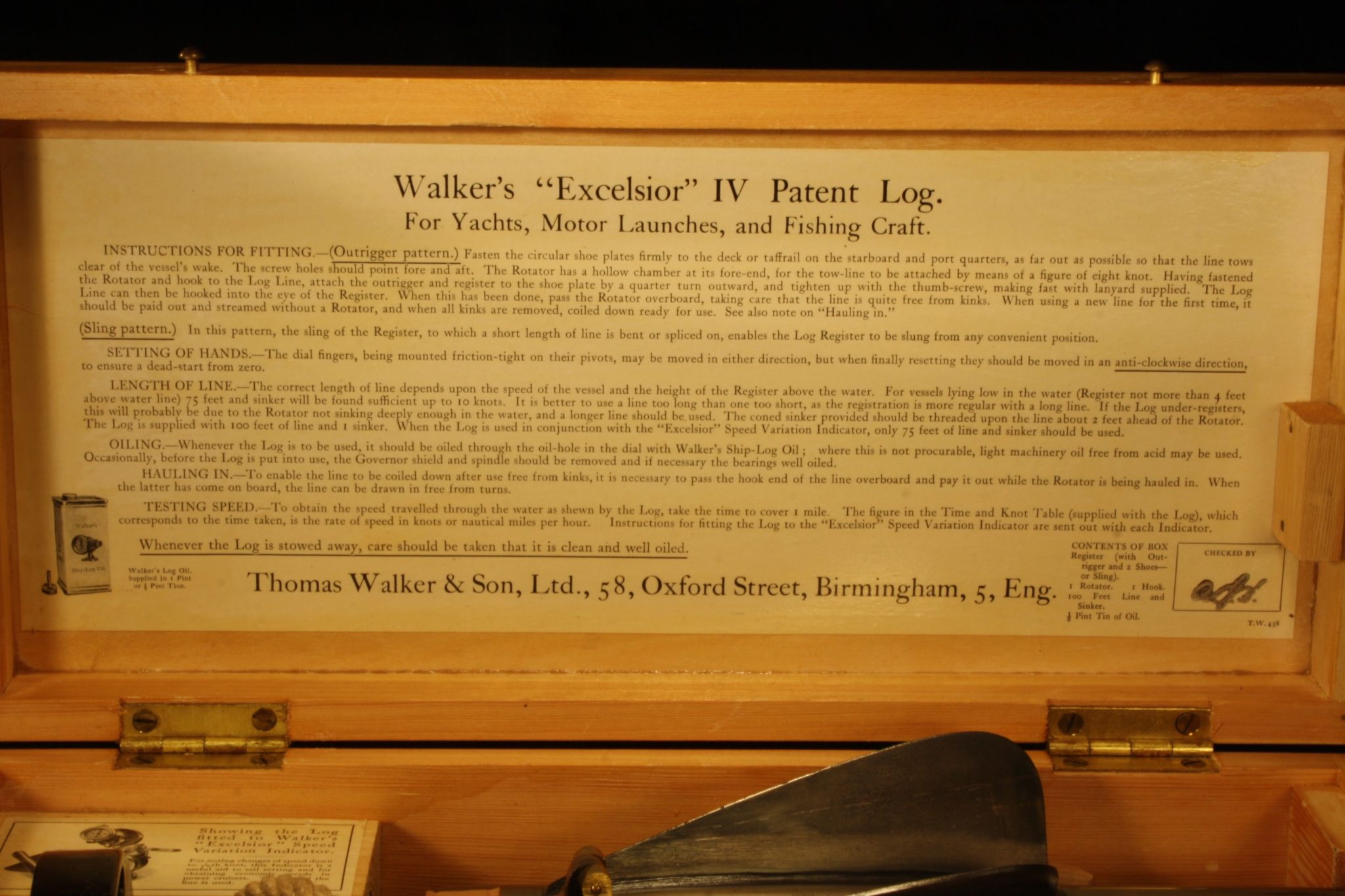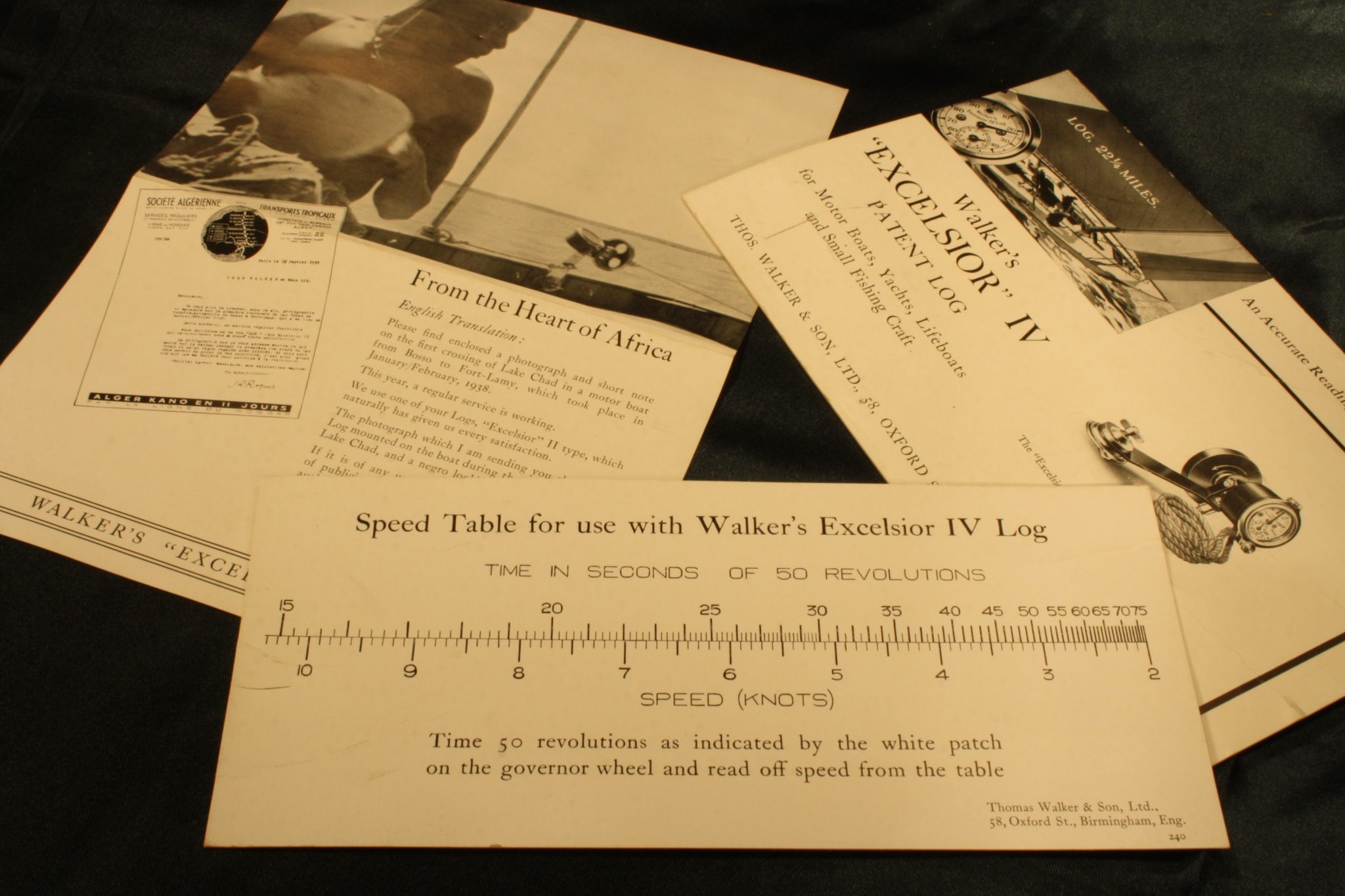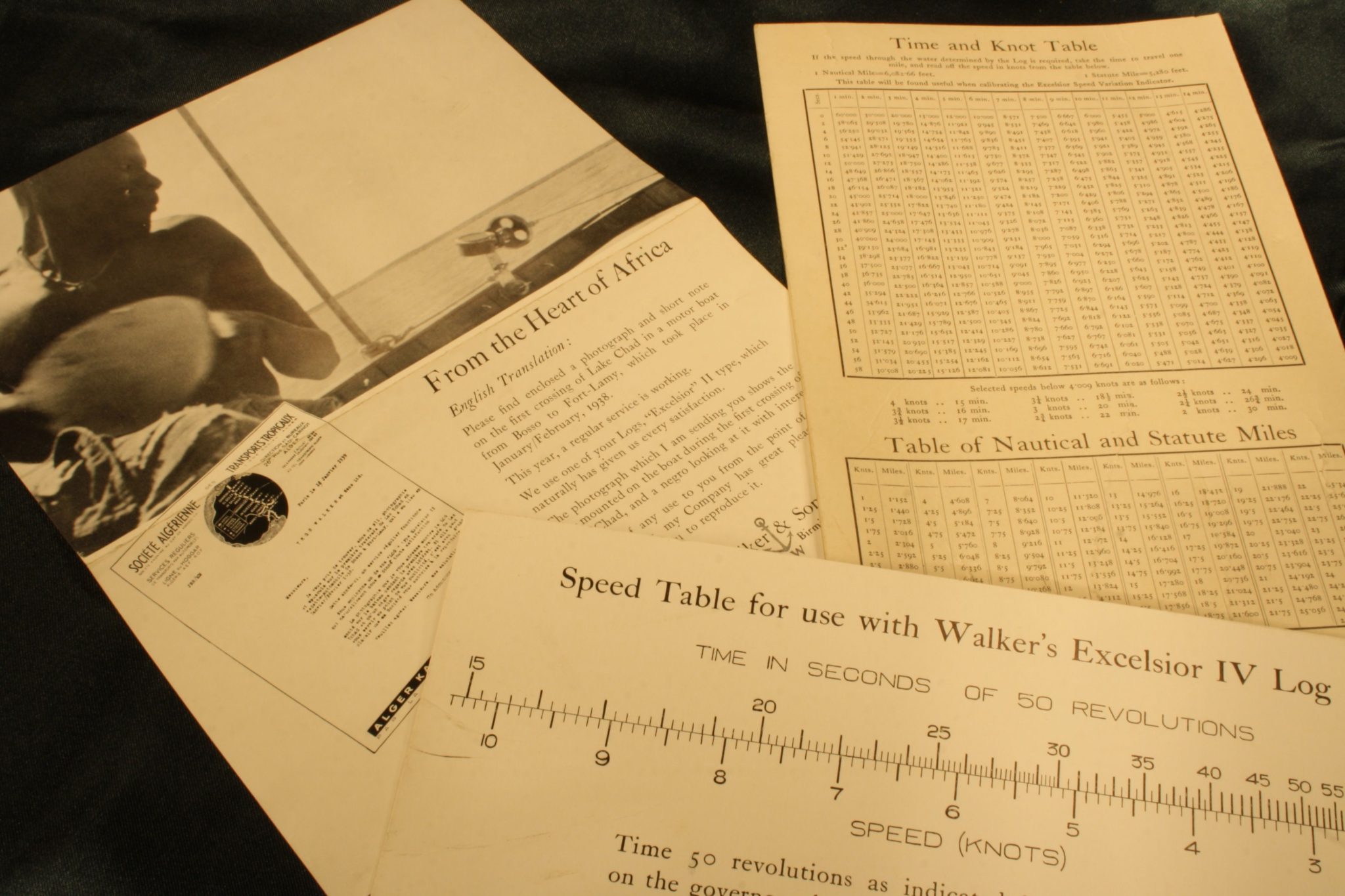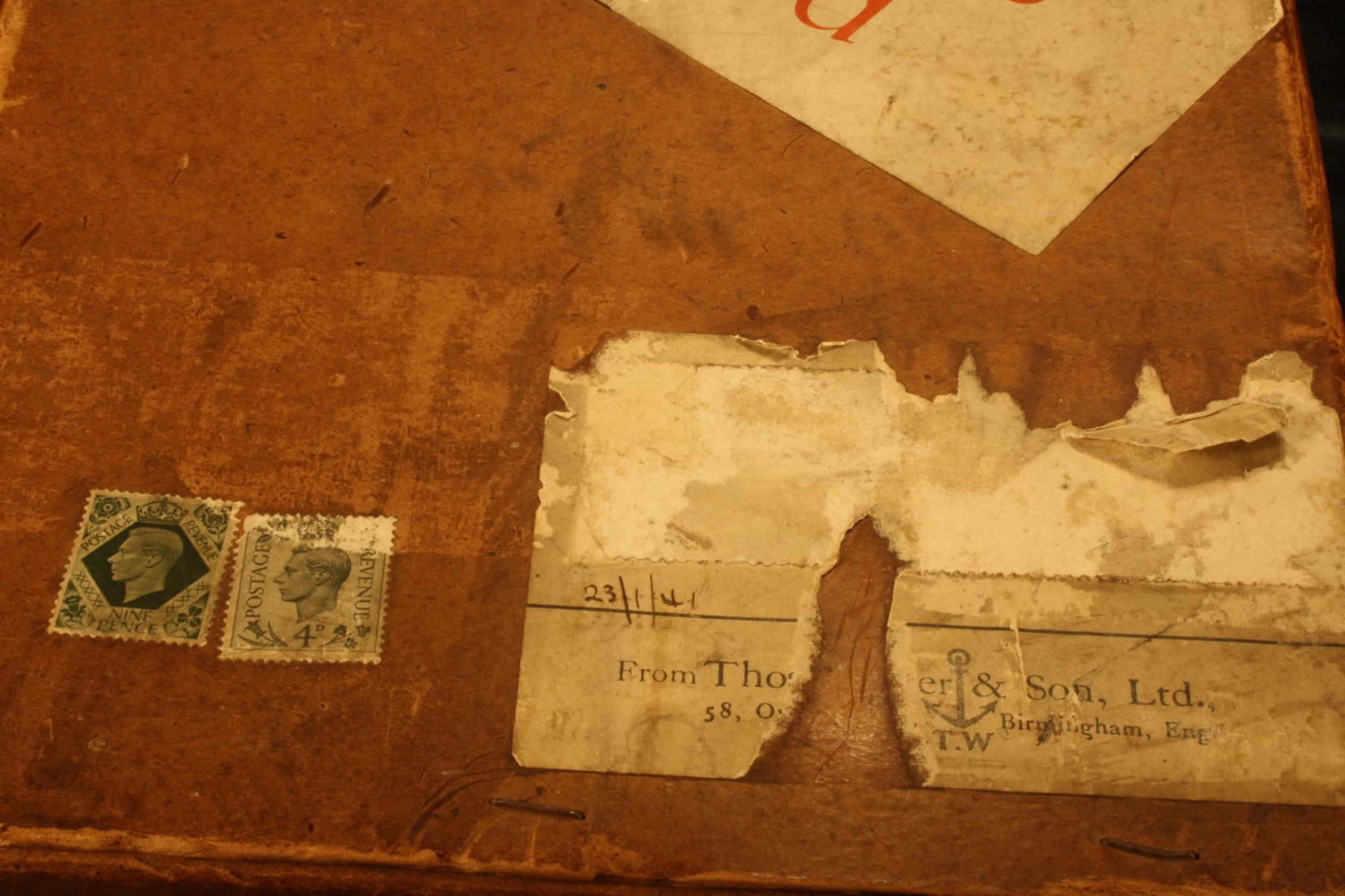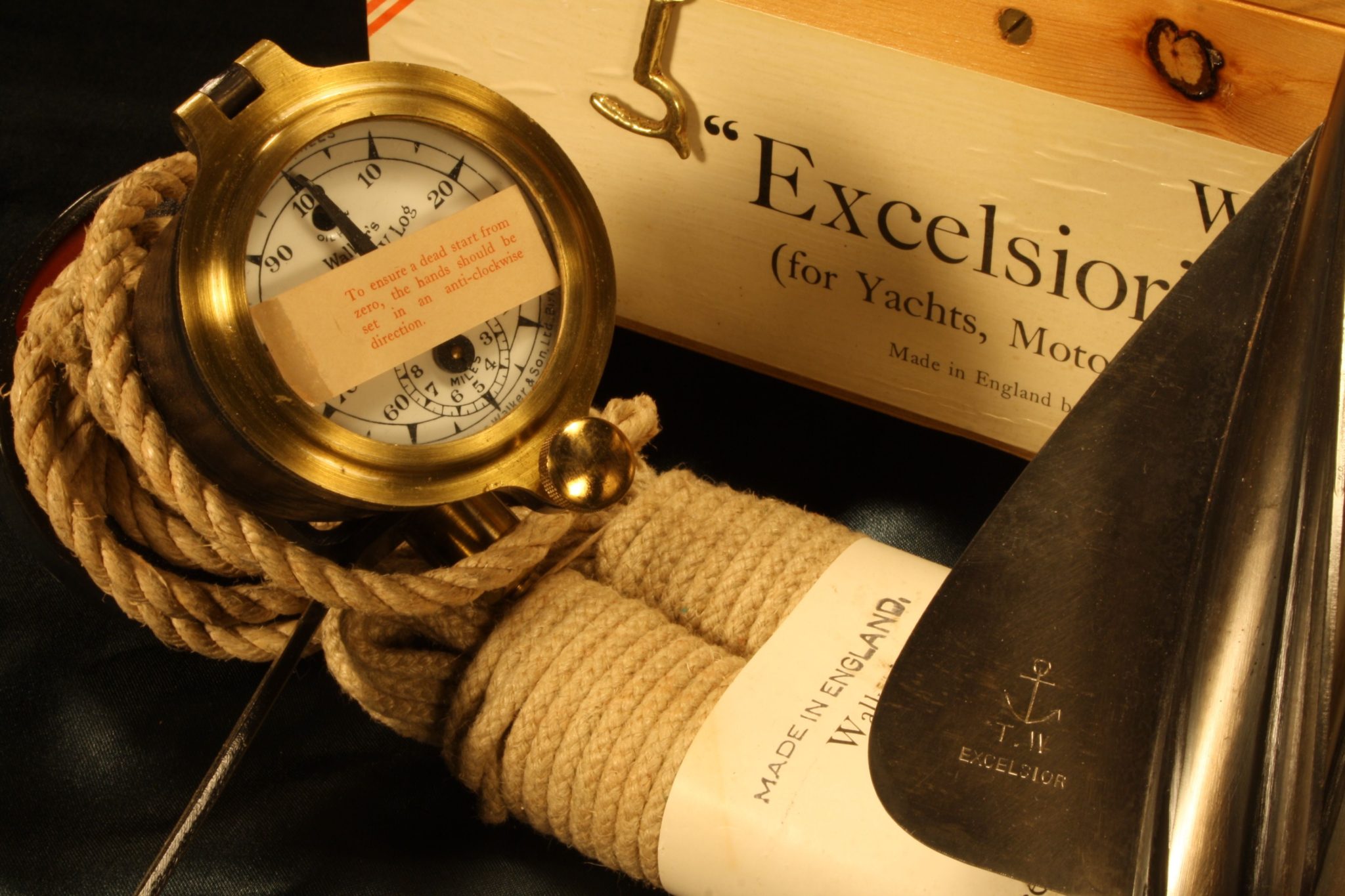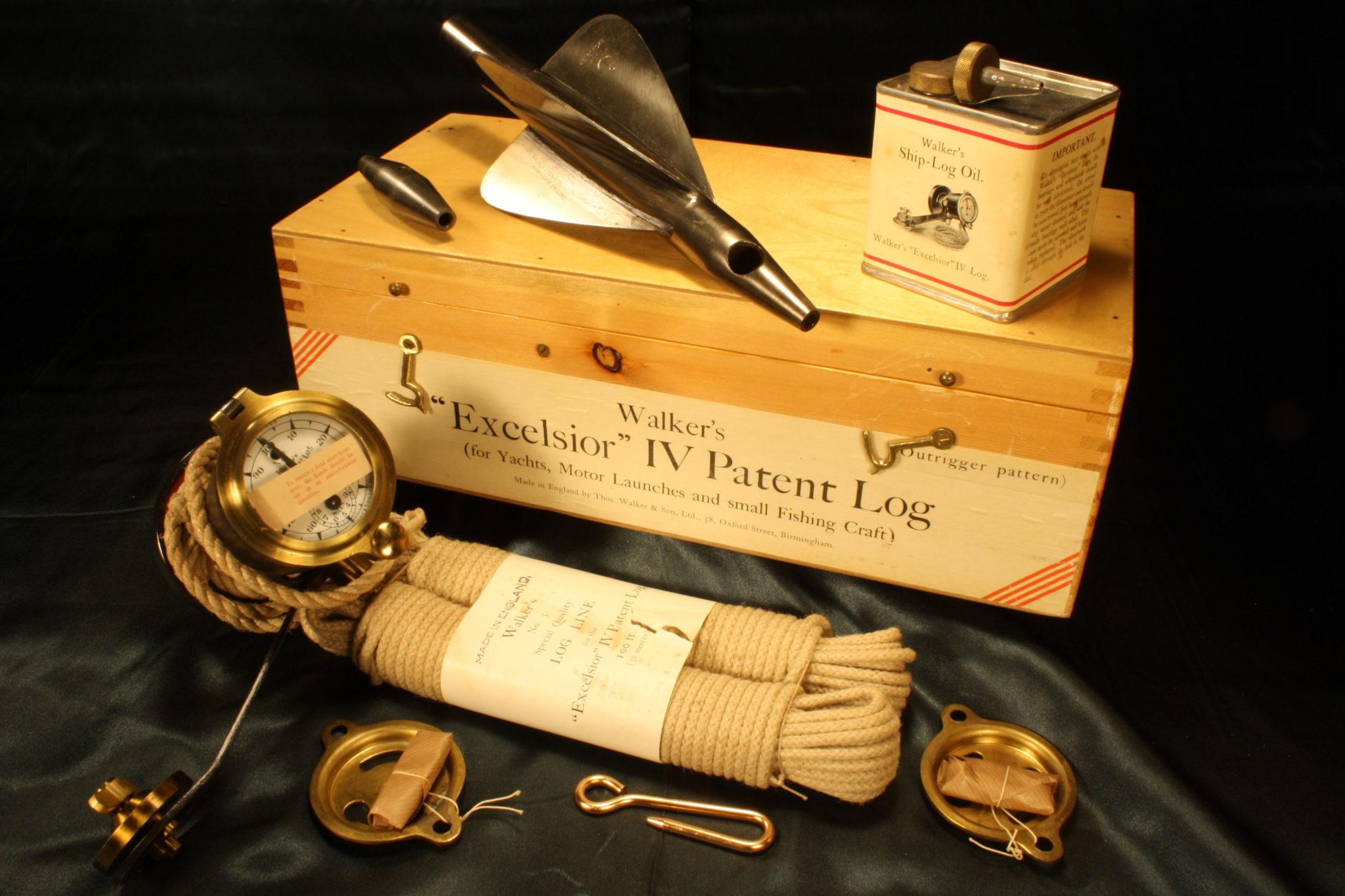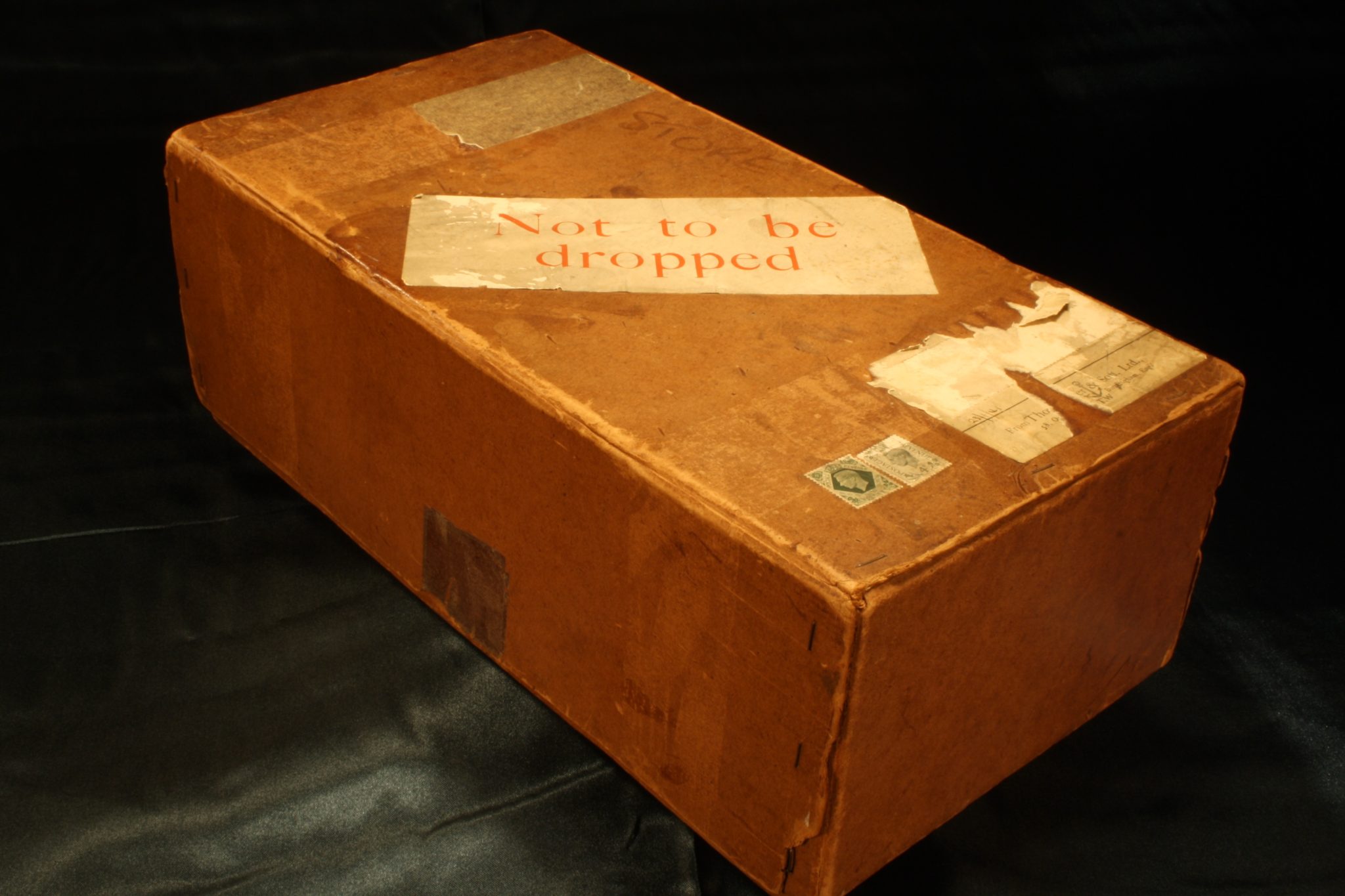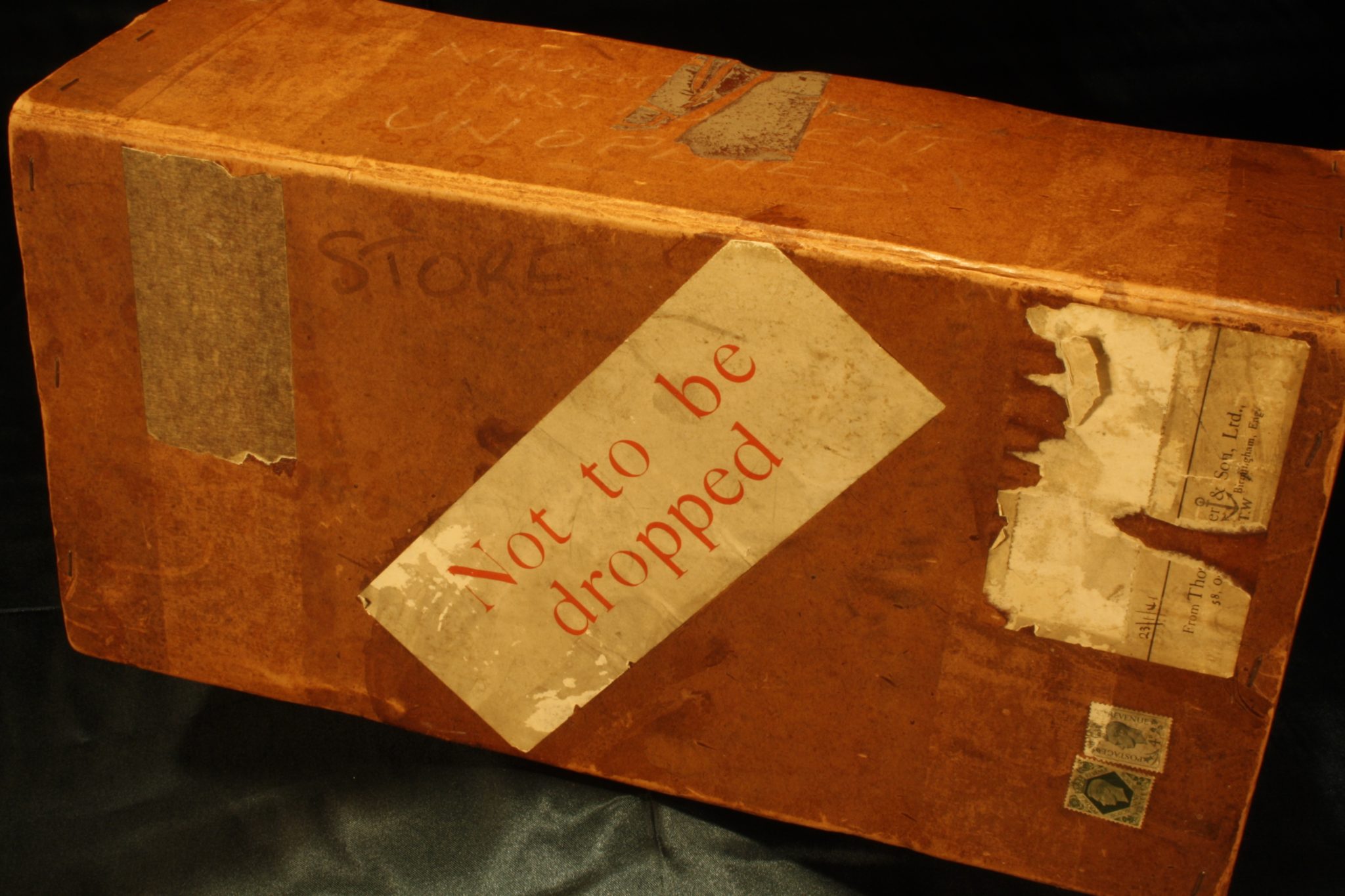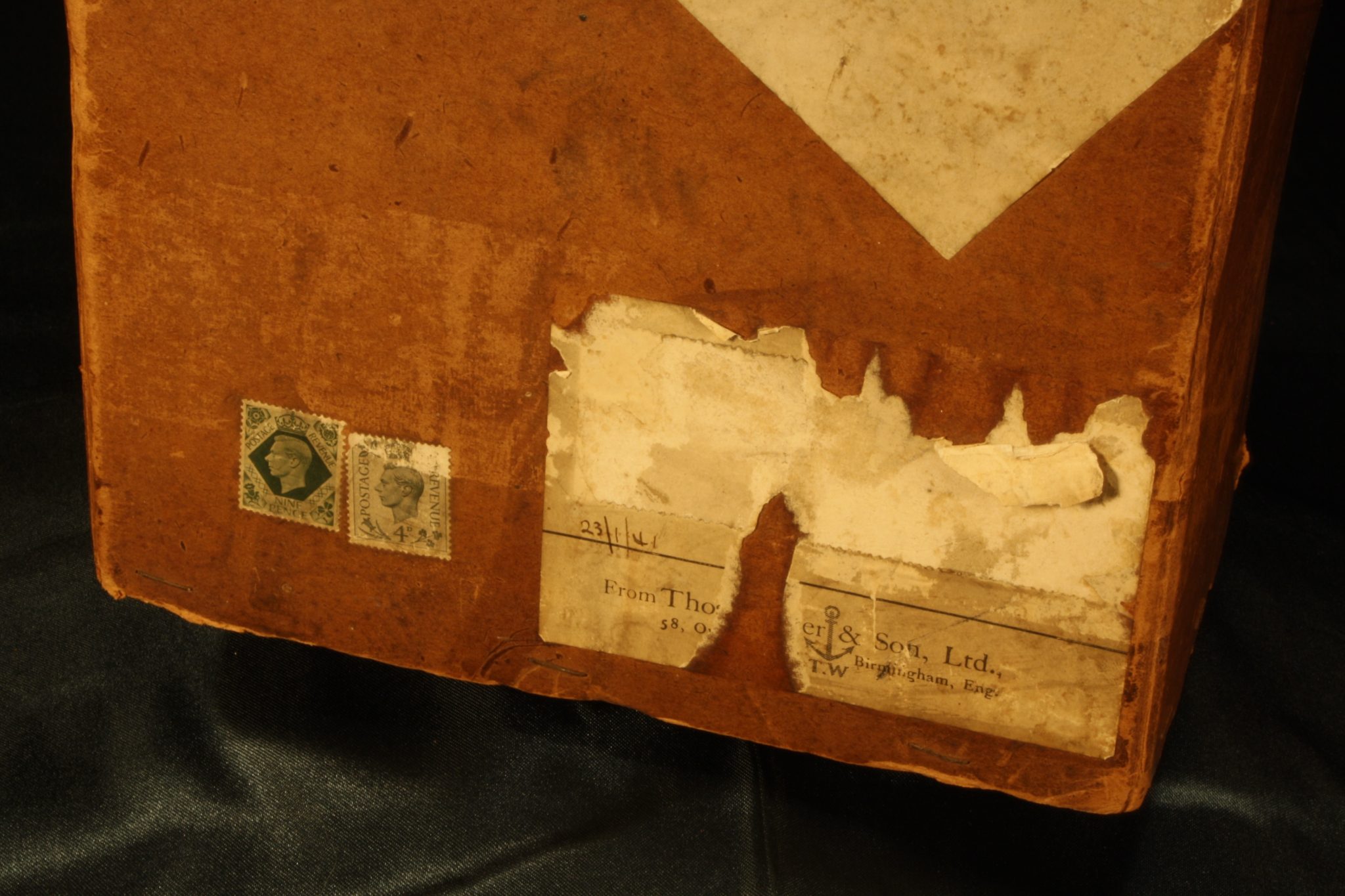Walkers Excelsior IV Patent Log c1941 – SOLD
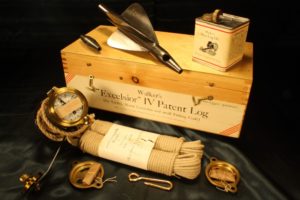 Excelsior IV Log comprising the following parts, most of which remain in their original wrappings:
Excelsior IV Log comprising the following parts, most of which remain in their original wrappings:
Register with outrigger
Two circular shoe plates
Rotator
Hook
Log line
Sinker
100ft of tow line
½ pint tin of oil
Both annotated labels remain clean and properly fixed to the inside of the lid and rotator stowage point.
All contained within a varnished pine box with hinged lid having swinging hook closure and applied long label to front marked “Walker’s “Excelsior” IV Patent Log, Outrigger Pattern (For Yachts, Motor Launches and small Fishing Craft). Made in England by Thos. Walker & Son, Ltd, 58, Oxford Street, Birmingham.” Contained in its original heavy duty waxed shipping carton, manufacturer’s label, postage stamps and other markings. Together with original paperwork: Speed Table for use with Walker’s IV Log, Time and Knot table with product advertising to verso, further promotional literature, “From the Heart of Africa.”
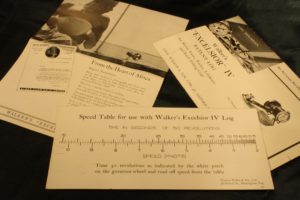 These pieces of nautical equipment are much sought after. The aesthetics are good and the item interesting in its own right, but the untouched condition, completeness and vintage origin of this item very much underscore its desirability. A rare collector’s piece.
These pieces of nautical equipment are much sought after. The aesthetics are good and the item interesting in its own right, but the untouched condition, completeness and vintage origin of this item very much underscore its desirability. A rare collector’s piece.
The Walker’s Excelsior IV Patent Log is a nautical instrument for measuring a vessel’s speed and distance travelled. When navigating a ship it is essential to be able to estimate the boat’s speed and distance travelled to determine its position at sea. In times past the only way to measure a ship’s speed was to throw a wood log into the water and observe how fast it moved away from the ship. In the 16th century, the log was fastened to a rope knotted at set intervals. The log was thrown over the stern (back) of the vessel and a crew member counted the number of knots that were paid out in a set time. From this they could estimate the speed of the vessel through the water. This was known as streaming the log and is also the derivation of the knot as a measurement of nautical speed. In 1878, Thomas Ferdinand Walker (1837–1921), an engineer in Birmingham, patented a mechanical log in which a recording instrument was attached to a rail at the stern of a vessel connected by a long cord with a rotor which was towed behind the ship. The instrument dial recorded the distance travelled.
This log is made of brass with a ceramic dial, with the main scale marked from 0 to 100 nautical miles and an inset dial marked from 0 to 10 miles. It has a fixing plate, on which it can turn, with which it would have been attached to the ‘taffrail’, the rail at the stern of a ship, usually on the starboard side. The Walker’s Excelsior IV instrument was designed for smaller vessels, such as yachts, launches and fishing vessels.
Dimensions: 16″ long x 8″ high x 8″ deep
Stock No: SI0464
Price: SOLD

